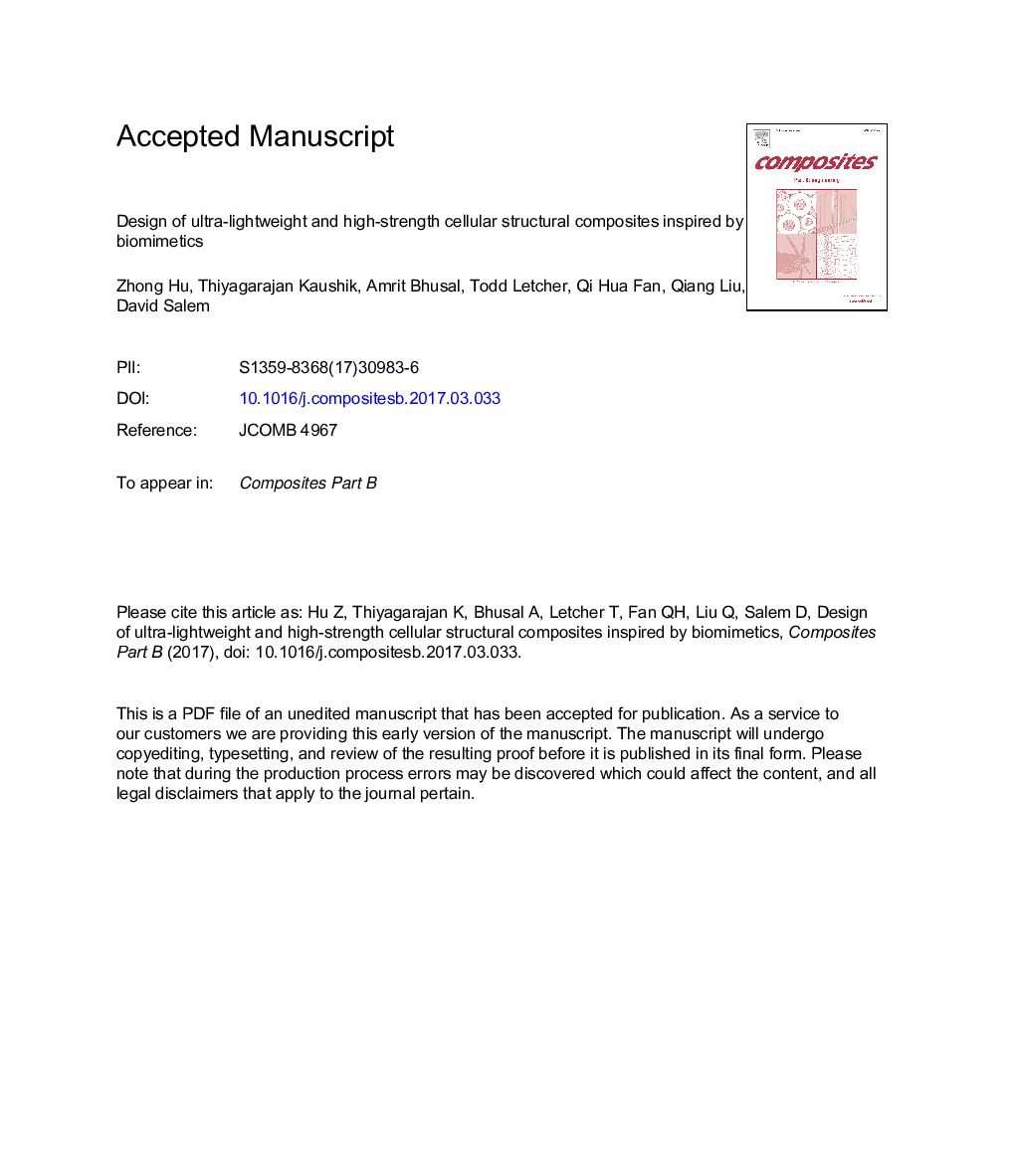| Article ID | Journal | Published Year | Pages | File Type |
|---|---|---|---|---|
| 5021238 | Composites Part B: Engineering | 2017 | 28 Pages |
Abstract
Cellular composites are of significant interest to the materials research community as they often possess multifunctional physical properties. To meet the application requirements, various design and fabrication methods are adopted to produce highly porous composites. In this work, the one-step and two-step approaches for efficient design and prediction of cellular structure's performance were presented for developing ultra-lightweight and high-strength cellular composites reinforced by discontinuous fibers. The topology designs of a 2D honeycomb hexagon model, a 2D cuttlefish model, and a 3D octahedron model, inspired by biomimetics, were presented. Computer modeling based on finite element analysis was conducted on the periodic representative volume elements identified from the cellular structural models to characterize the designed cellular composites' performance and properties. Additive manufacturing technique (3D printing) was used for prototyping the design, and experimental tests were carried out for validating the design methodology.
Related Topics
Physical Sciences and Engineering
Engineering
Engineering (General)
Authors
Zhong Hu, Kaushik Thiyagarajan, Amrit Bhusal, Todd Letcher, Qi Hua Fan, Qiang Liu, David Salem,
